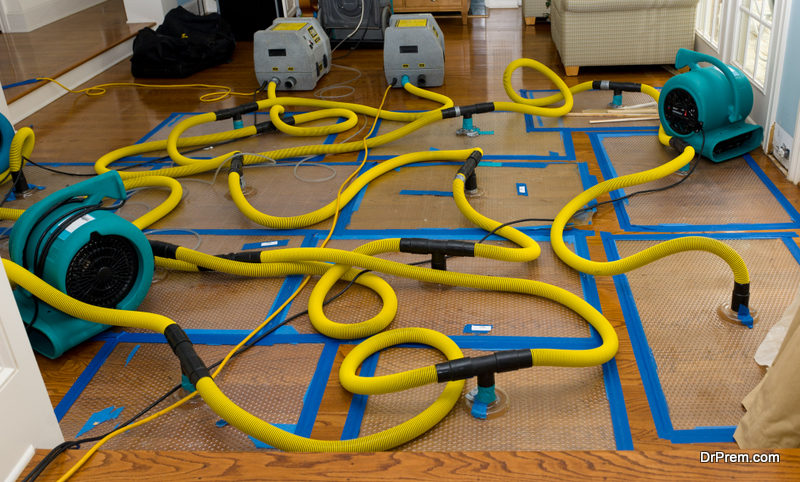Your home covered in flood can be such a challenging thing to witness. It’s truly heartbreaking to see your hard work slowly fading away as the water takes over your floor, ruining its quality. With that, you may want to look for quick ways you can revive your home after flood damage.
No matter where the flood comes from, quick removal and revival are a must. A day of delay from cleaning up your home can result in molds, which could cause harm to your property and your health. While you can always call a water damage restoration company, listed below are the things that could help you bring back the beauty and functionality of your home be.
1. Call Your Insurance Company

Before you do any cleaning, you should first call your insurance company and report to them about your house’s situation. After your call, they’ll schedule a house visit to check the flood damages and give you an estimate of how much they can cover.
Ensure that you take photos and videos of the flood damages before, during, and after your restoration for proper documentation. With your insurance company’s help, you can have enough funds to revive your home to its original glory.
2. Take Out Everything
While it might be tempting to remove the flood right away, you should begin by taking out everything that’s been affected by the flood. Depending on the damage, you can restore them or toss them into the trash. As you take them out, place them in a sunny area so that they can dry quickly.
For your upholstery items, you can choose to hire a cleaning service that’ll help ensure that they’re thoroughly cleaned, and that there are no traces of molds and mildew forming inside. However, if you still feel uneasy, especially that mold can form quickly within 24 hours, and your item is soaking with floodwater, you can dump it out and purchase a new one for safety reasons.
3. Remove Flood From Your Home
After clearing the floor with your soaked items, you can now begin removing the flood from your home. There are two ways you can accomplish the task. You can either do it manually or use a wet vacuum for a quicker result.
For manual cleanup, you’ll be needing a bucket and mop to remove the water from your home. However, this may not be for everyone, especially for those with back problems. For a quicker cleanup, using a wet vacuum would certainly be helpful as you don’t need to bend excessively just to clean your floor. If you don’t have a wet vacuum with you, you can always rent one at your nearest store.
When removing water from your home, don’t forget your kitchen cabinets as flood could get inside as well. Ensure that you thoroughly remove any water and remove any debris that could get inside.
4. Dry The Entire Room

After removing water from your home, it would leave a water residue, which can be hard to remove even with a dry cloth. To dry the entire room completely, you should promote maximum ventilation as much as possible. You can begin by opening the doors and windows, and allowing the space to air dry. You can even turn on your fans to make the drying process faster.
Alternatively, if the weather isn’t ideal for air-drying your room, you should consider getting a dehumidifier that could absorb all of the excess water inside the room. Just ensure that you get a dehumidifier that can cover the size of the room for speedy results.
5. Hire A Restoration Company
After ensuring that your house is completely dry, you should call a water damage restoration company right away. They’ll visit your property, see the damages, and provide you with an estimated cost for the repairs and restoration needed. If the flood damage is only minimal, you may choose to do the restoration on your own. However, if the damages are severe, hiring a professional will ensure successful results.
With a professional, they can promote proper safety measures, especially that molds could quickly grow inside. Moreover, there could involve some wall and floor replacements that you should leave to the professionals.
6. Practice Safety Measures
To prepare for your house restoration project, you should begin by practicing proper safety measures to keep yourself safe from accidents. Start by wearing rubber boots, gloves, and clothes. The rubber matter will safeguard you from the possibility of electrocution, especially that water may conduct electricity.
After wearing your protective gear, you should proceed with your gas and electricity lines, and turn them off. Unless you have a go signal from your utility provider, you should keep them closed at all times.
Conclusion
Reviving your home after water damage can be very challenging. Quick action is a must for a successful revival project, especially that molds can grow within 24 hours after exposure to the flood. While the cleanup might be tiring, it’ll increase your chance of bringing back the aesthetic appeal and functionality of your home.
Article Submitted By Community Writer




